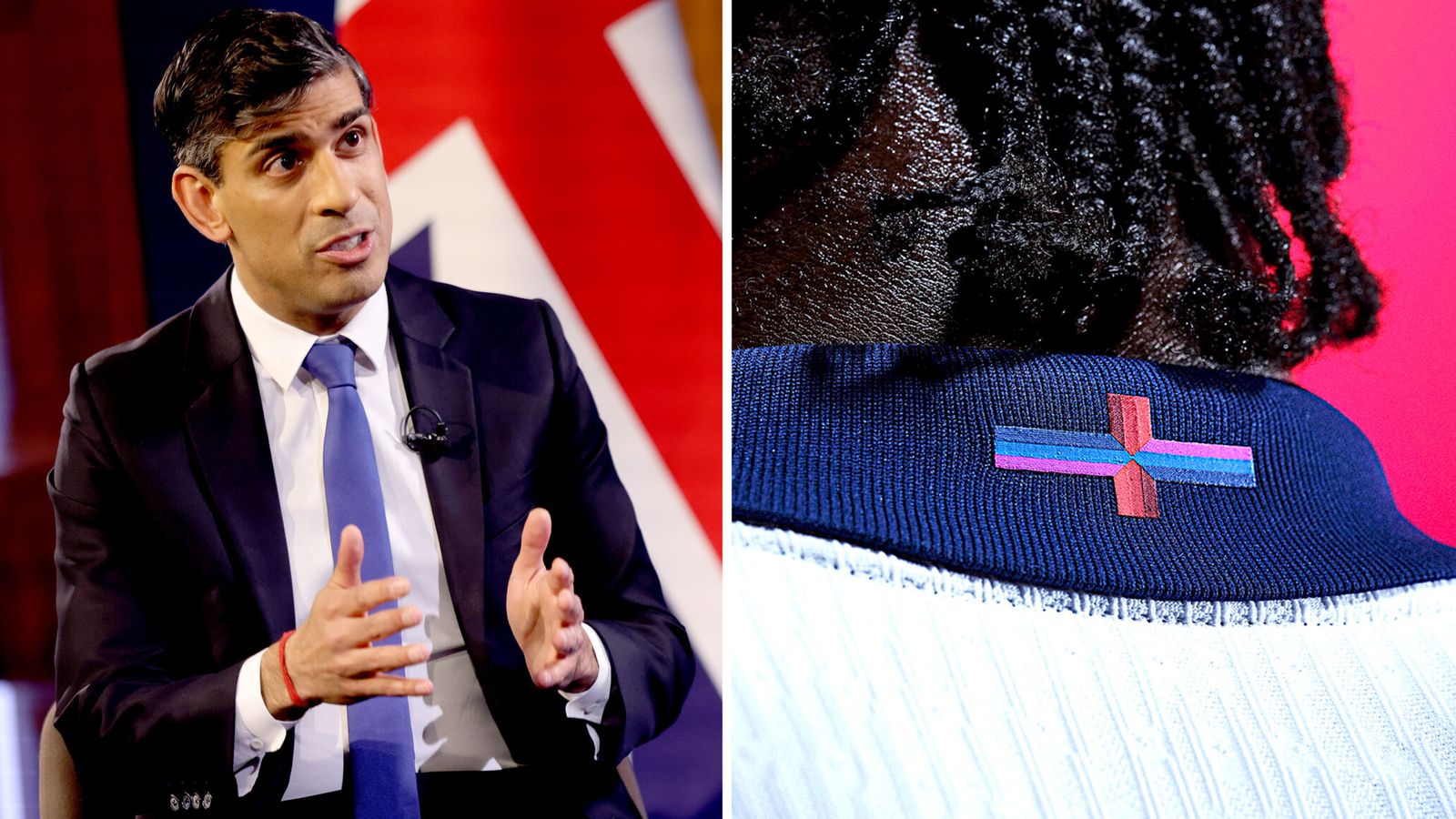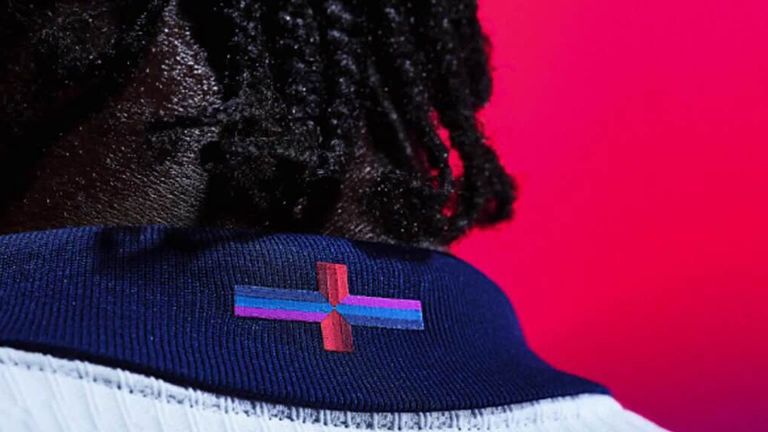Nike England shirt row: ‘Don’t mess with national flags’, says Sunak after US brand changes St George’s Cross


Rishi Sunak has warned against “messing with” the national flags after Nike changed the colour of the St George’s Cross on a new England football shirt.
Wading into the controversy, the prime minister argued the flags are “a source of pride, identity, who we are and they are perfect as we are”.
His comments came as a backlash grew over the modification to the iconic flag by the US sportswear giant, with fans demanding the original flag be reinstated and an online petition collecting thousands of signatures.
Politics latest: Will Labour compensate WASPI women if it wins power?
Labour leader Sir Keir Starmer has already called on Nike to “reconsider” its decision, as the symbol was a “unifier”.
Labour’s shadow attorney general Emily Thornberry has also branded it “peculiar”, pointing out people would not expect the heraldic Welsh dragon to be swapped “to a pussycat” or the French tricolour to be altered.
Please use Chrome browser for a more accessible video player
0:39
‘You wouldn’t change the Welsh dragon to a pussycat’
The row was triggered after Nike revealed it had tweaked the traditional red cross and introduced purple and blue stripes.
The company dubbed it “a playful update” to the shirt ahead of Euro 2024, inspired by the training kit worn by England’s 1966 World Cup winners.
The St George’s Cross, featuring a white background with a red cross, is the national flag of England.
The standard hails back to the time of the crusades, with the two colours used to distinguish between English and French troops.
The red cross on a white background subsequently became representative of the religious military campaigns and was used by many nations to show their support for them.
The first record of the standard being associated with St George was in Genoa, which adopted him as patron saint during the 12th century as the personification of the ideals of Christian chivalry.
St George was a soldier in the Roman army, who allegedly slayed a dragon in order to save the Princess of Libya.
When he was rewarded by the King, he gave all the money to the poor and then converted to Christianity.
He died a martyr in 303 because he refused to recant his faith.
England adopted him as its patron saint in 1348.
In 1552, all saints’ flags were abolished in England apart from St George’s in the English Reformation under King Edward VI who also used it as his royal standard.
In 1606, the flag was incorporated into the official design of the Union Jack, which united the four nations as they then existed.
Still widely used today, Church of England churches often fly the St George’s flag.
More recently the English national emblem is flown at sporting events to represent the country.
The flag flies with the Union Flag every St George’s Day, which is celebrated on 23 April.
Mr Sunak said: “Obviously, I prefer the original and my general view is when it comes to our national flags we shouldn’t mess with them because they are a source of pride, identity, who we are and they are perfect as we are.”
Advertisement
Ms Thornberry said: “It’s all very peculiar. The England flag is a symbol of unity.
“People, particularly in the last few years when we’ve been having such a difficult time, the England flag at the time has been a symbol of unity… the Lionesses and so on.
“So you wouldn’t expect Nike to go off and have a look at the Welsh flag and decide to change the dragon to a pussycat.
“I mean, you wouldn’t expect the England flag to be changed like this.
“You wouldn’t expect bits of purple in the French tricolour. I mean, why are they doing it? I don’t understand.”
Read more on Sky News:
Police investigate Tory donor’s alleged racist comments
Home secretary spent £165,000 on flight to Rwanda
Back in 2014, Ms Thornberry was forced to resign from the shadow cabinet by the then party leader Ed Miliband after being accused of mocking “White Van Man” in a social media post during a visit to Rochester, which pictured a housing block with St George’s flags flying from the window.
Responding to the Nike redesign, England’s most capped men’s player, Peter Shilton, wrote on X: “Sorry but this is wrong on every level I’m totally against it.”
Former England goalkeeper David Seaman said: “It doesn’t need fixing. What’s next, are they going to change the Three Lions to three cats? Leave it alone. It’s the St George’s Flag. Leave it alone.”
The price of the shirt has also faced criticism since it was launched earlier this week.
An “authentic” version costs £124.99 for adults and £119.99 for children while a “stadium” version is £84.99 and £64.99 for children.
A Nike spokesperson previously said: “The England 2024 home kit disrupts history with a modern take on a classic.
“The trim on the cuffs takes its cues from the training gear worn by England’s 1966 heroes, with a gradient of blues and reds topped with purple.
“The same colours also feature an interpretation of the flag of St George on the back of the collar.”